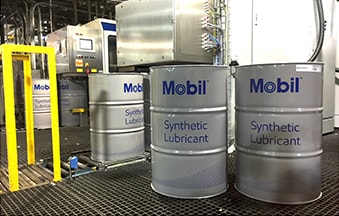
High viscosity index oils can help improve productivity
Rick Russo, Americas Industrial Product Technical Advisor, ExxonMobil Research and Engineering
When it comes to selecting an industrial lubricant for a particular application, one of the key considerations is viscosity. Viscosity can influence lubricant life expectancy, equipment wear rate, energy consumption, fluidity and a range of other factors.
Most equipment provides very specific viscosity requirements. These requirements often refer to a lubricant’s ISO Viscosity Grade. However, using the ISO grade alone provides an incomplete picture of a lubricating oil’s fluidity. This grade describes an oil’s viscosity at a temperature of 40°C (104°F), but an oil’s viscosity can be significantly impacted by a change in temperature.
As temperature rises, viscosity decreases, and as temperature decreases, viscosity increases. As a result, to truly determine a lubricating oil’s quality, you must also consider its Viscosity Index (VI). VI, an empirical, unit-less number, is a measure of the change in viscosity of oil relative to temperature. Oils with a high VI will exhibit less change in viscosity at increased temperatures than oils with a lower VI.
So, how can high VI oils help improve productivity?
Well, industrial equipment is not subject to constant operating conditions. On the contrary, industrial operations are often subjected to a wide variety of operating environments, many characterized by extreme temperatures. As a result, plant operators should utilize higher VI oils, which are formulated to withstand variation in temperature to maintain pumpability at low temperatures and sufficient film strength at high temperatures.
As higher VI translates to a more stable oil viscosity across a broad temperature range, operators should additionally opt for high VI lubricants in situations where the optimum viscosity required for a particular application is unknown. In fact, the only situations in which low VI oils are well-fit for use occur when equipment speeds, loads and temperature are constant and operating condition variability is not an issue.
Synthetic lubricants with high VI, such as those in our Mobil SHC™ family of synthetic lubricants, can help operators in many industries protect their equipment from a wide range of operating environments and conditions. Because they are formulated to resist thinning at elevated temperatures, using high VI synthetic lubricants can deliver superior equipment protection across a greater operating temperature range as compared to conventional, mineral-based lubricants that have a lower VI, helping to improve equipment reliability and performance to advance plant productivity.

